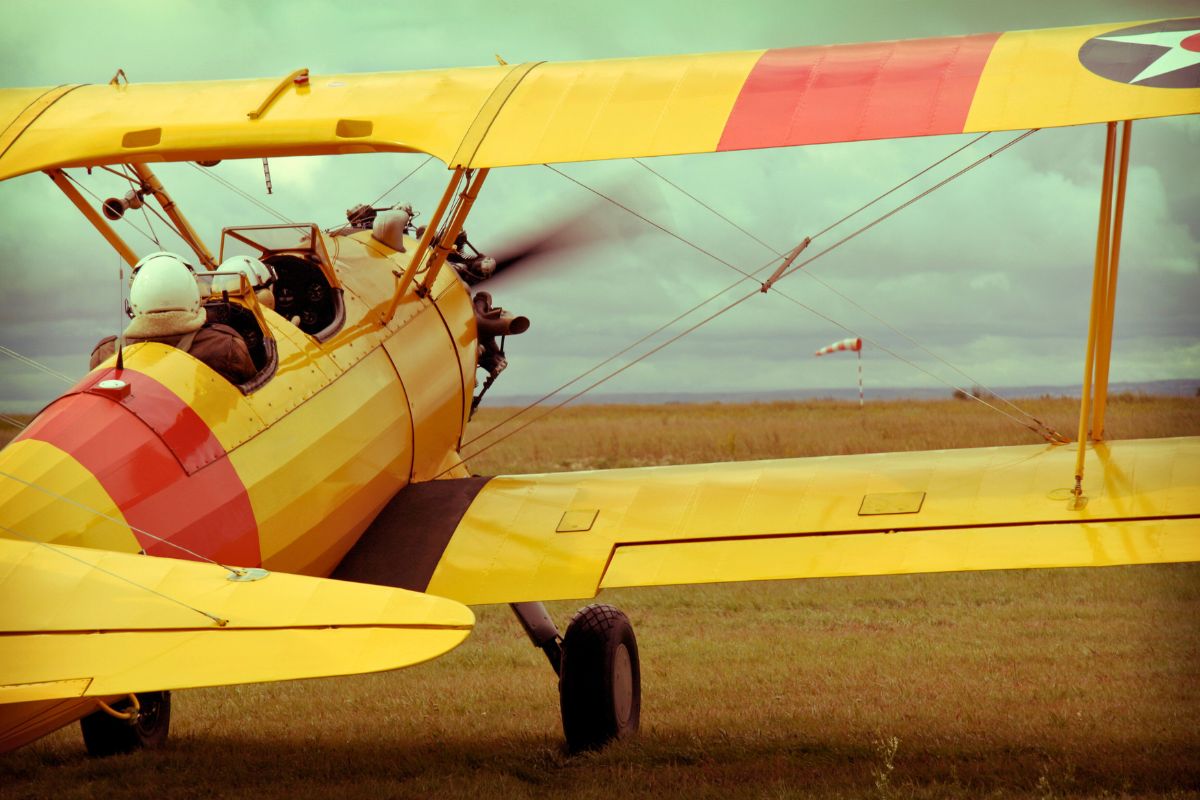James Herman Banning was born on November 5, 1899, just four years before the Wright Brothers achieved their first flight in 1903. The aviation pioneer pursued his dream despite significant barriers, including prejudice and racism. In 1932, Banning and his co-pilot, Thomas Cox Allen, became the first African American pilots to complete a transcontinental flight.
This Black History Month, discover Black travel history pioneers like Banning, whose perseverance shaped the future of Black aviation. Though short, Banning’s life marked a historic turning point in access to an industry once prohibited to Black people.
A Farmer’s Son Flies High
Banning spent his early years on his family’s rural homestead in Oklahoma, where he attended school. His flying desires ignited as early as age six, watching his kite soar freely as he ran through the fields. After graduating from Faver High School in Guthrie, Oklahoma, in 1918, Banning moved to Ames, Iowa, the following year. No stranger to paving his own way, he studied electrical engineering at Iowa State College while managing the J. H. Banning Auto Repair Shop.
Banning became even more impassioned about learning to fly after his first airplane ride at an air circus in 1920. He applied to numerous flight schools but was repeatedly denied entry. Without access to a plane and no one willing to lend him one, Banning could not achieve his required solo flying time. America’s prejudices often created roadblocks domestically, prompting many Black pilots to acquire a license in Europe. However, Banning was not easily swayed and eventually found a solution.
World War I veteran Lt. Raymond Fisher agreed to train Banning, albeit covertly, at his flying field in Des Moines, Iowa. Just before Banning was ready to go solo, Lt. Fisher died in a plane crash, leaving the future pilot with no plane to fly. Once again, firm in his focus, Banning bought the engine from Lt. Fisher’s crashed plane and used plane and auto scraps to build his own, “Miss Ames.”
Using the plane he built, Banning completed his solo flying hours requirement. He earned a mechanics certificate and became the first African American aviator to obtain a license from the U.S. Department of Commerce in 1926. Later, in Texas, Banning also obtained a transport pilot’s license.
A Historic Flight From Coast-To-Coast
A dreamer who knew no bounds, Banning upped the ante with a vision to fly cross-country during the Great Depression. The pilot believed freedom in the skies had the power to influence freedom on the ground and wanted to provide heroic hope to communities facing economic hardship. With no financial backing or local media coverage, Banning set out to find supporters, leading him to connect with Allen. Allen, a talented mechanic who invested $200 in the flight, also devised a fundraising strategy: garnering support in each community where the plane landed. Through small donations for gas and supplies, warm meals, and a place to sleep, Banning and Allen could complete the journey of a lifetime.
In exchange for each donation, donors could sign “The Gold Book.” The book, an inspirational nickname for the plane’s wing, allowed donors to etch their names into history (and the skies).
The duo completed a historic and arduous 21-day flight, leaving Los Angeles on September 18, 1932, and concluding in Long Island, New York, on October 9, 1932. In total, 65 individuals from 24 communities contributed. While the 3,300-mile journey only took 42 hours, as Black pilots, they had to fly and service the plane themselves. Additionally, their lack of funding caused delays as they solicited funds along the way.
When they reached New York, Banning and Allen were met with fanfare. After circling the Statue of Liberty in celebration and landing, Mayor Jimmy Walker greeted them with a key to the city. A celebration at The Cotton Club also commemorated the achievement, with performances by Duke Ellington and Cab Calloway.
A Life Cut Short, But A Legacy That Lives On
Banning tragically died at a San Diego air show on February 5, 1933, just four months after the milestone flight. He was working to earn money to retrieve Miss Ames. The cross-country plane had been forced down and left in Hiattsville, Pennsylvania, following the flight.
An unfortunate irony is that Banning’s death resulted from being denied the opportunity to fly the plane in the air show due to his race. Instead, the experienced pilot had to fly as a passenger in a two-seater biplane piloted by a Naval aviation machinist mate second class. During a loop stunt, the plane stalled, leading to a fatal crash for Banning. After his death, his friends attempted to claim Miss Ames in his honor; however, they soon discovered it had been sold for scrap without Banning’s knowledge or consent.
Banning’s unwavering, by-any-means spirit propelled him to unimaginable heights, opening the door for generations of Black aviation professionals. Although his time and dream were cut short, his legacy in aviation endures, especially in Ames, Iowa. In 2023, the Ames Municipal Airport was renamed the James Herman Banning Ames Municipal Airport, where Banning attended Iowa State University over a century earlier.





